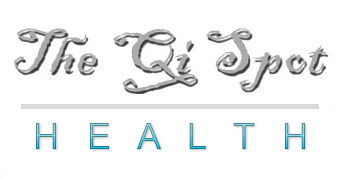For the common cold with heat signs, such as yellow discharge from the nose, loud cough, pressure in the head.
Cold is yin. When you catch a cold, it either turns to cold or heat in the body. When it turns to cold, everything slows down, coagulates, contracts, stagnates and circulation becomes impaired. This means the muscles, skin and tendons become stiff and sore. It also impairs the function of the lungs and spleen.
Types of Common Cold
Cold Wind: This is a combination of wind and cold in the body, creating issues such as the one's mentioned above, along with symptoms from the wind, such as headaches, dizziness, migraiting pain, runny nose, congested nose, etc. If the runny nose is clear, it is a sign there is no heat involvement. The treatment would be to build up your immune system, and at the same time, 'knock out' the cold by warming the body to the extent of causing you to sweat.
Obstruction Due to Cold: Traditionally known as cold bi (blockage) pain, this condition typically takes the form of body aches or joint pain that is relieved by warmth. The most common Western diagnosis for this pattern is arthritis. Since the syndrome is caused by cold, the joint may actually feel cold to the touch, and the pain typically gets worse in cold weather. The Chinese treatment principle is to increase circulation and warm the acupuncture meridians through which qi and blood circulate by means of moxibustion, acupuncture, and herbs.
Cold Attacking the Spleen and Stomach: In this externally caused disorder, cold causes digestive symptoms such as abdominal pain, clear vomit, and watery diarrhea. Although it usually accompanies an externally contracted cold or stomach bacteria or virus (what we commonly refer to as stomach "flu"), this syndrome can also be caused by eating cold foods such as ice cream.
Cold Congealing the Liver Meridian: The liver meridian passes through the genital area, and this condition is a manifestation of cold in that meridian. Symptoms include testicular pain or shrinking andhernia pain. Moxibustion, acupuncture, and herbs can effectively correct this imbalance in a short time.
Spleen Yang Deficiency: If a person has an underlying deficiency of spleen yang (deficiency in energy and heat needed in order to digest food), cold can severely impair digestive function. Symptoms of spleen yang deficiency include watery stools with undigested food, cold extremities, edema, and a slow pulse. When a person with this underlying deficiency is also affected by external cold pathogens, the imbalance is especially difficult to eliminate.
Treatment first expels the cold pathogenic factor. Then it tonifies the yang aspect of the spleen and kidneys to bring about a long-term increase in the body's basic metabolism, or its ability to maintain the heat needed for proper digestion, which is known in traditional Chinese medicine as life-gate (metabolic) fire. Spleen yang deficiency is treated with moxibustion and warming herbs that tonify spleen yang.
Kidney Yang Deficiency: Since the kidneys are the source of yang metabolic fire for the entire body, a deficiency in kidney yang can make the individual especially prone to cold. The symptoms of kidney yang deficiency include an inability to stay warm, cold extremities, low sex drive, frequent urination, edema (fluid retention), and pain in the low back. The yang deficiency can be corrected with long-term application of moxibustion and consumption of herbs that tonify kidney yang, thereby increasing metabolic fire.

